A silver mica capacitor is a type of capacitor that employs mica as the dielectric material and features a thin layer of silver deposited on its surfaces. Mica is a natural mineral known for its excellent electrical insulation properties, high dielectric strength, and low dielectric loss. The silver coating on the mica sheets serves as the capacitor’s electrodes.
Silver mica capacitors are highly valued for their precision in capacitance values. This makes them suitable for applications where accuracy and stability are crucial, such as in oscillators, filters, and resonant circuits. This article delves into different facets of mica capacitors, including their construction, electrical characteristics, and applications. To explore other types of capacitors, see our introductory guide to types of capacitors.
Mica capacitor construction
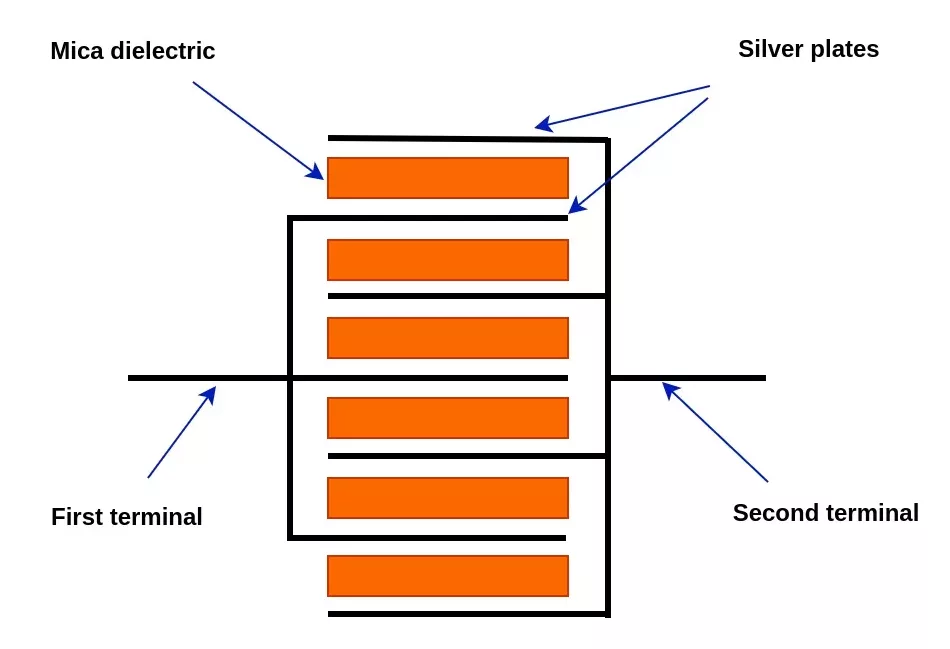
Silver mica capacitors feature a dielectric layer of mica between two electrodes composed of thin silver coatings. This dielectric material has a dielectric constant of 6.5 – 8.5. The interleaved arrangement of mica and silver creates a compact structure, leveraging mica’s high dielectric constant for stable capacitance.
The thin silver coating ensures efficient conductivity, minimizing energy losses across diverse conditions. This construction makes silver mica capacitors highly precise and reliable for electronic applications requiring accuracy. Figure 1 illustrates the construction of a silver mica capacitor.
Construction of dipped mica capacitors utilizes a process that involves immersing mica sheets in epoxy or phenolic resin. This encapsulation process provides a compact and protective casing for the capacitor. This enhances durability and allows for effective heat dissipation. The dipped construction also ensures a robust and sealed design. Dipped silver mica capacitors are suitable for applications where environmental factors or space constraints are considerations.
Are silver mica capacitors polarized?
Silver mica capacitors are typically non-polarized components, meaning they do not have a specific orientation or polarity. Unlike electrolytic capacitors that are polarized, these capacitors can be connected in any direction in a circuit. This characteristic makes them versatile and easy to use in various electronic applications where a non-polarized capacitor is required.
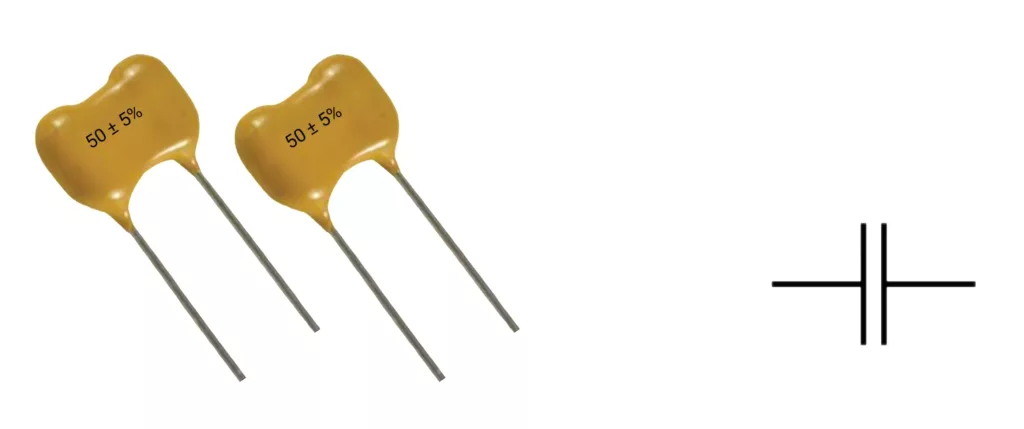
Silver mica capacitor symbol
Since a mica capacitor is a non-polarized component, its symbol typically features two parallel lines representing the capacitor plates. The absence of distinct positive or negative signs indicates the lack of polarity, reflecting the non-polarized nature of mica capacitors. Figure 2 shows two mica capacitors and a mica capacitor symbol. The silver mica capacitor markings show the capacitance of the components and their tolerances.
Axial, radial and SMD mica capacitors
Mica capacitors are available in various styles to accommodate different circuit configurations. Surface Mount Device (SMD) silver mica capacitors offer impressive characteristics that make them suitable for a broad array of applications. SMD mica capacitors offer a space-efficient, low-profile option for surface mount applications.
Radial leaded silver mica capacitors feature leads extending from one end, facilitating easy through-hole mounting on circuit boards. Axial leaded silver mica capacitors, on the other hand, have leads extending from opposite ends. This design provides versatility for different circuit orientations.
Characteristics of silver mica capacitors
Mica capacitors offer several distinctive features that make them ideal for a broad range of applications. They include the following:
- High stability: one of their primary attributes of a silver mica capacitor is high stability. This characteristic ensures consistent capacitance values across a broad spectrum of conditions, including temperature variations, voltage fluctuations, and frequency changes.
- Low dielectric loss: a notable quality of mica capacitors is their low dielectric loss. This characteristic ensures minimal energy dissipation during the storage and release of electrical energy. Additionally, the low dielectric loss of mica capacitors makes them efficient in applications where energy conservation is critical.
- High quality factor: the high-quality factor (Q factor) of mica capacitors ensures efficiency in energy storage and low energy losses. With the ability to withstand high voltages, these capacitors find utility in applications requiring the handling of elevated voltage levels.
- High insulation resistance: the high insulation resistance of silver mica capacitors contributes to prolonged and reliable performance over time. Precision in manufacturing allows for tight tolerances in capacitance values, making mica capacitors suitable for applications demanding high accuracy.
- Low temperature coefficient: this means the capacitance of silver mica capacitors remains relatively stable over a range of temperatures. This characteristic, combined with their ability to operate effectively across a wide frequency range, makes them well-suited for use in RF and microwave circuits.
- High moisture resistance: mica capacitors demonstrate resistance to moisture and humidity, enhancing their reliability in diverse environmental conditions.
The encapsulation of dipped mica capacitors protects the internal components from external influences. In addition, it contributes to the capacitor’s resistance to moisture and other environmental factors. Dipped mica capacitors exhibit good temperature stability. They are suitable for applications that require reliable capacitance values over a range of operating conditions.
Silver mica capacitor uses
Mica capacitors find diverse applications across various electronic circuits where precision, stability, and reliability are paramount. Overall, the versatility of mica capacitors makes them valuable across a broad spectrum of electronic applications. Common uses of mica capacitors include the following:
- Radio frequency applications: mica capacitors are suitable for use in radio frequency (RF) circuits for tuning and frequency control. This is mainly due to their ability to maintain accurate capacitance values over a range of frequencies. Their low loss and high Q factor make them ideal for sustaining the performance of RF systems.
- Audio equipment applications: in audio equipment, mica capacitors play a crucial role, particularly in coupling and signal processing circuits. Their stability and low distortion characteristics contribute to the faithful reproduction of audio signals.
- High voltage applications: mica capacitors are suitable for use in high-voltage applications, such as in power factor correction circuits. The robust construction and insulation properties prove beneficial in these applications.
- Precision instrumentation: mica capacitors are suitable for use in precision instrumentation, where their accuracy and reliability are essential. They find applications in measurement devices, oscilloscopes, and other precision electronic instruments that require components capable of delivering consistent and dependable performance.
Conclusion
In summary, silver mica capacitors are crucial in electronics, offering precision and stability. With a mica and silver design, they excel in applications like oscillators and filters, ensuring accurate capacitance values. These capacitors stand out for their reliability, making them essential in critical circuits where precision is a must. Their enduring legacy in the electronics industry highlights their ongoing relevance and effectiveness in various electronic designs.

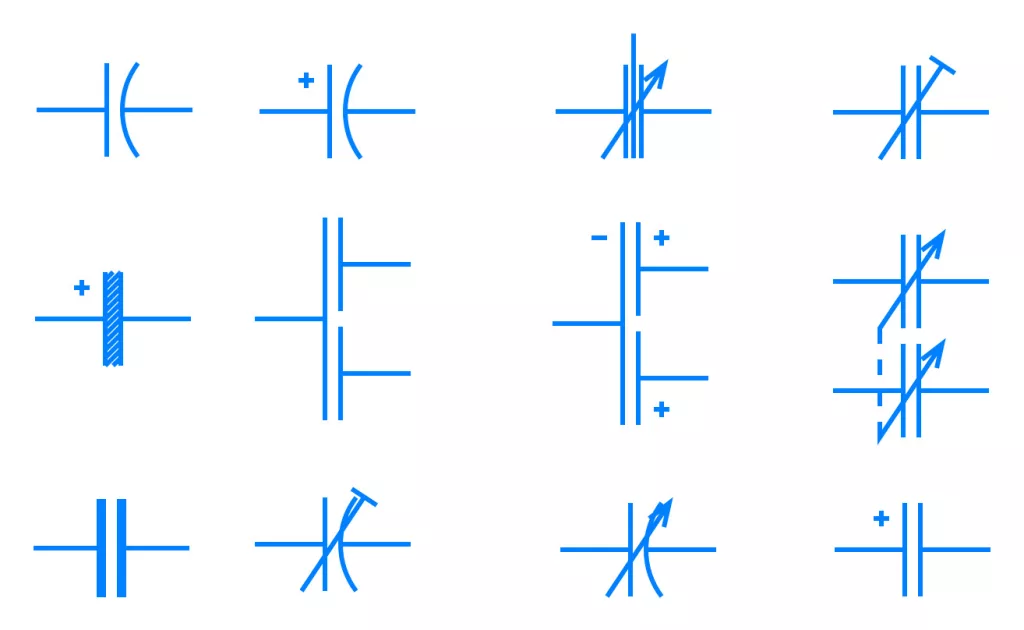
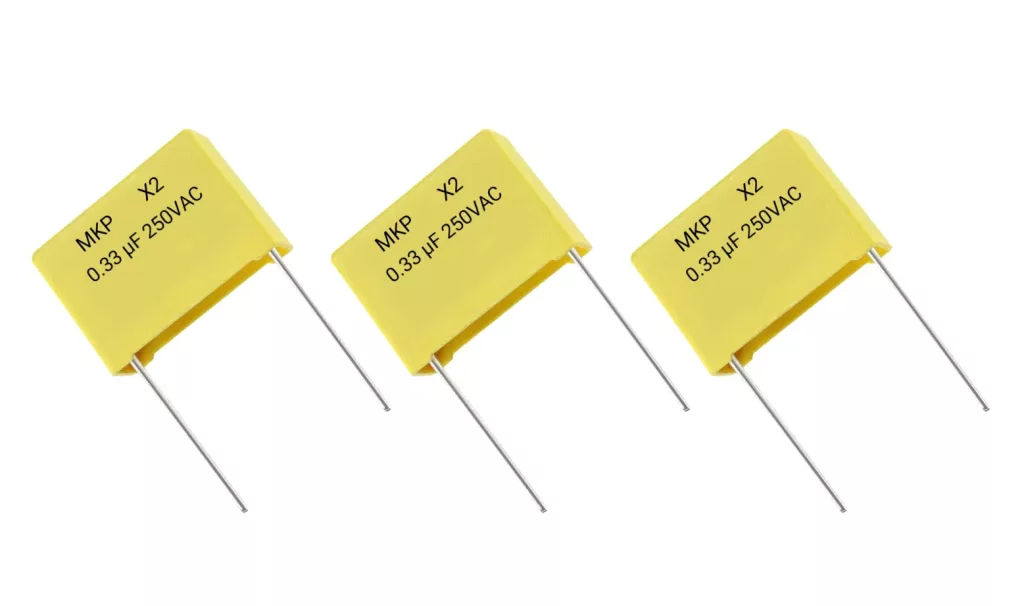
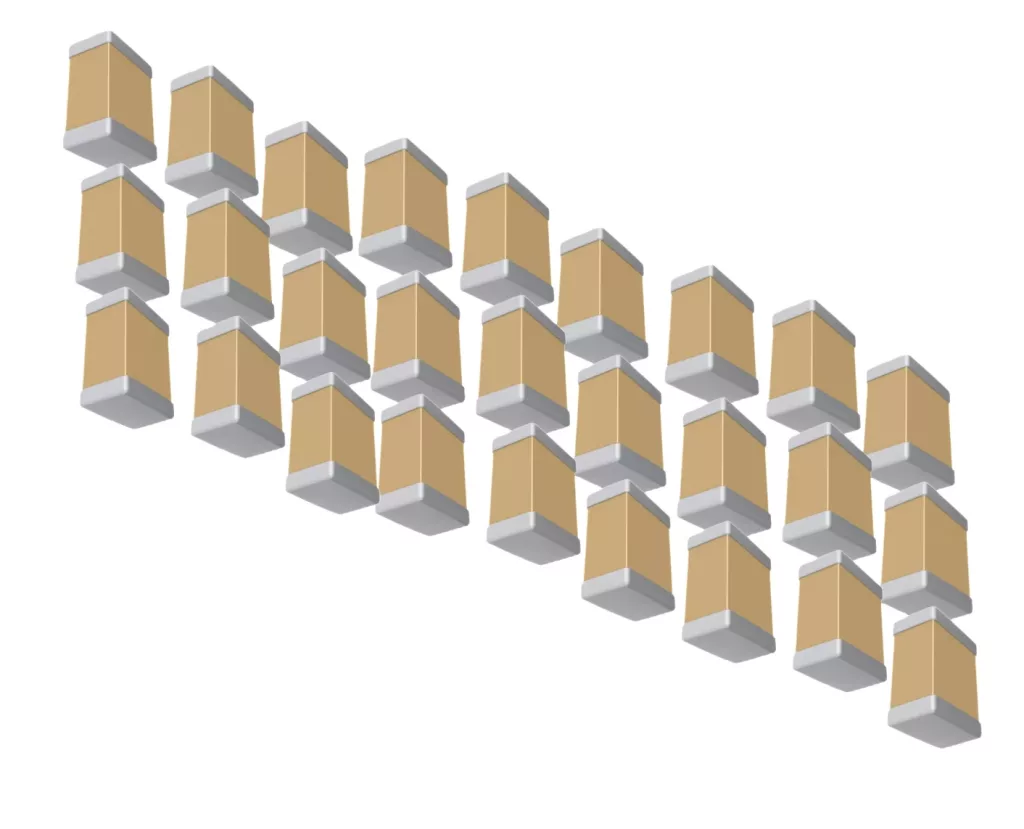
Pingback: Polarized vs Non-Polarized Capacitor: Differences and Uses -